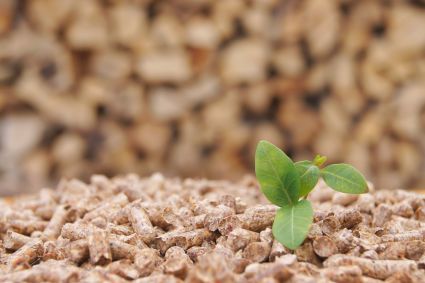
Wood pellets are an ecological, practical and economical type of fuel. Have you chosen a pellet stove? Great idea! But to make sure you get the most out of this fuel, it is important to make the right choice. Here’s a guide to make sure users of wood pellet Stûv P-10 stoves are happy...
Wood pellets are produced by compressing waste from sawmills, such as sawdust and wood shavings. This compression results in the formation of a small cylinder that is very dry and very dense, which gives it an impressive heating power. The pellets do not contain any glue or binding agent, as they stick together thanks to the lignite in the compressed wood.
To guarantee their quality, there are some norms regulating the different characteristics of wood pellets. So pellets that comply with Enplus A1, DINplus and “NF qualité haute performance” certificates all comply with the European quality standard in place (EN 14961-2). They fulfil the following conditions :
6mm diameter and 3 to 40mm long, a size that suits the automatic feed system of the wood pellet stove ;
a maximum humidity rate of 10% for effective heating (this is one of the big benefits of pellets: they are dry when you buy them, so there’s no need to dry them before use) ;
less than or equal to 0.7% ash, reducing the need to empty the pellet stove’s ash pan.
For optimum use of the Stûv P-10 pellet stove, wood pellets should be labelled with one of these certificates.
Transporting and handling bags of pellets can generate wood dust. When it is poured into the pellet hopper to load up the pellet stove, this dust can disrupt the power system (by distorting the worm screw) and clogging up the stove as it burns. This then results in the glass becoming blackened. That is why it is important not to squash the bags during transport or storage, to reduce the production of sawdust. Furthermore, resinous-wood-based pellets produce less dust, which is why Stûv recommends using them.
Pellets should be kept in a dry place, where the temperature is above 5°C. It is also preferable to avoid storing them in the open air, in their original bag. And to maintain their humidity levels, wood pellets should be used relatively quickly after the bag is opened.
The absence of dust and the very low humidity rate of pellets are essential criteria, as they are directly responsible for the efficiency of the burning process. To sum up, the dryer and more solid the wood pellets are, the more heat the pellet stove produces !